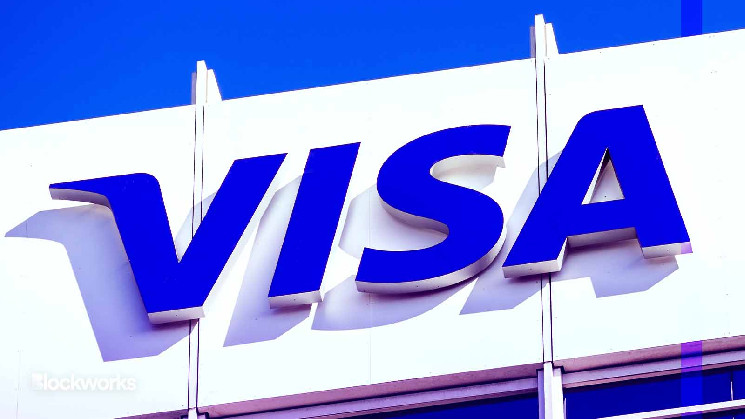Blockchain
Visa, one of the world’s largest digital payment platforms, is digging deep into the cryptocurrency space.
In an interview with Blockworks, Visa’s head of CBDC and protocols, Catherine Gu discussed the company’s current exploration of blockchain protocols and consensus mechanisms. She emphasized Visa’s keen interest in the area, saying that it aims to better comprehend blockchain’s underlying fundamentals and assess its potential role in shaping the future of payments.
The payments giant recently released a technical paper that showcased how digital transactions could be transformed using account abstraction (AA).
Ethereum mainnet currently sees roughly one million transactions every day. By comparison, Visa averages 707 million transactions per day, the paper notes.
The team is currently looking at ways to possibly abstract gas fees for users and enable users to pay transaction fees using ERC-20 tokens instead of the blockchain’s native cryptocurrency.
“The ultimate question is what is the main pain point? What is the main use case to really get blockchains to mainstream adoption,” Gu told Blockworks.
Gu explained that the team had stumbled across account abstraction through an internal hackathon. She then began going down a rabbit hole as they learned more in-depth details about the space.
“There was a lot that we didn’t fully appreciate, like just understanding the basic distinction between an [Externally Owned Account] versus a [Contract Account], what that implication means and how it feeds into the UI and UX,” Gu said.
Using off-the-shelf open-source codes, the Visa team has been experimenting with the 4337 paymaster contract to see how users can use it to delegate payments to the paymaster. The group also began looking into ways to enable gas fees to be paid using any generic ERC-20 token.
As crypto technology is still rather new to the Visa team, Gu and her team are in the process of figuring out the interactions between the different contracts and learning the roles of each network participant.
Most of what Visa is doing on the blockchain today is considered an experiment, Gu commented.
“I would still treat what we have done purely as research, because it’s very far from how we’re thinking about what our eventual product roadmap should look like,” she said.
Becoming SMEs and working with the greater crypto community
As Visa’s crypto team is still in its infancy, Gu explains that there is no clearly defined roadmap that exists today.
Despite this, she remarked that the collective goal for her and her team is to become subject matter experts and discover concrete developments from there.
“We really have to understand the technology deeply, that’s the core goal of the product team…once we get to that stage we will look into ways to contribute back…we want to share these ideas with the crypto community and encourage other companies and developers to come and give us feedback,” Gu said.
Much of Visa’s research can be found on their crypto thought leadership website. Aside from looking into account abstraction, Gu and her team are also exploring themes of interoperability, scalability and privacy.
“As blockchain technology matures, we’re really thinking about different user cases…whether that’s aimed at the consumer level, institutions and even central banks exploring CBDCs…privacy is going to be a big focus area,” she said. “So for us, I think it will be important to understand both the implications but also the design behind privacy in the future.”



